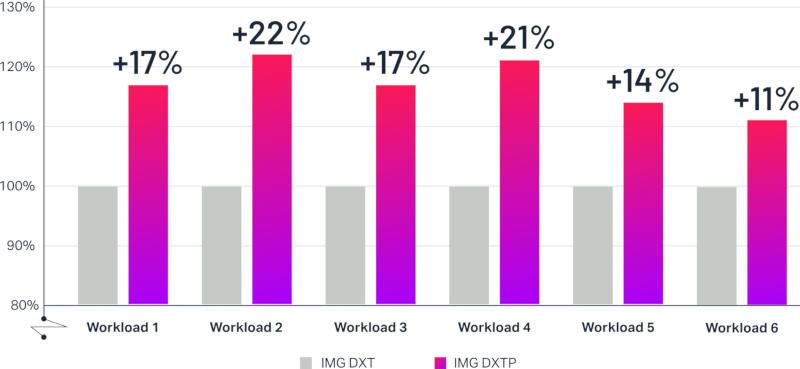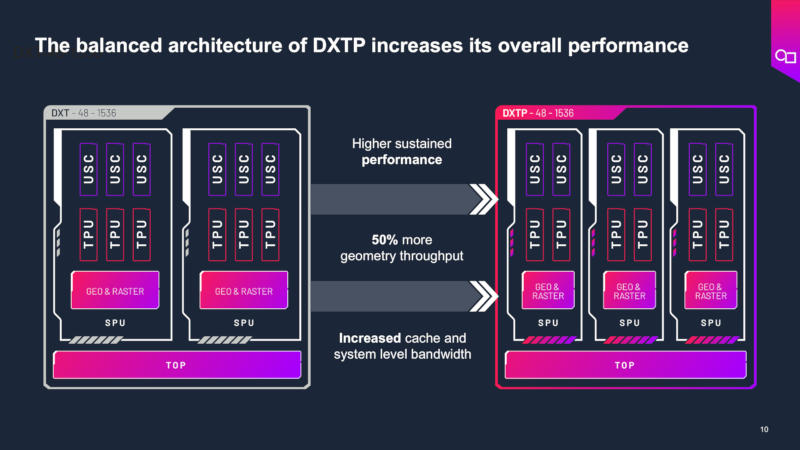Imagination Technologies has introduced the DXTP graphics processor, designed for both graphics processing and general-purpose computing on smartphones and other power-constrained devices.

Image source: imaginationtech.com
Thanks to a number of innovations at the microarchitecture level, Imagination DXTP offers an average of 20 percent improvement in power efficiency – frames per second per watt – in the most common workloads compared to current DXT GPUs.

Imagination projects are in demand, as the developer himself points out, in markets ranging from mobile devices to driverless cars. Last year, the company mastered hardware acceleration technology for ray tracing, which until recently was the prerogative of advanced video cards for PCs and gaming consoles, but in recent years has been increasingly penetrating mobile chips.
The DXTP computing engine is available in two configurations: for mobile devices and for cars. It supports rendering up to 64 gigapixels per second, with a performance of 2 Tflops in FP32 calculations and 8 TOPS in INT8 at a clock frequency of 1 GHz. The DXTP architecture is also highly flexible – thanks to hardware virtualization technology, a multi-tasking GPU can simultaneously process graphics and perform general-purpose calculations.

Imagination DXTP offers a software ecosystem, including an SDK and all the necessary tools. Highly optimized OpenCL compute libraries are available to enable GPU use in AI-related tasks, as well as oneAPI and TensorGraph standard solutions that simplify porting existing code to the Imagination architecture. Imagination GPUs support the LiteRT framework, which enables high-performance AI workloads on Android. For application developers, PowerVR tools are available for low-level performance analysis, debugging, ray tracing recording, and asking questions on the Imagination developer forum.
Let’s add that in 2019, London-based Imagination announced the AXT graphics series, followed by BXT and CXT in 2020 and 2021, respectively, and IMG DTX was released in 2023. Imagination GPUs appear on the market as part of various single-chip platforms approximately 18 months after the announcement.